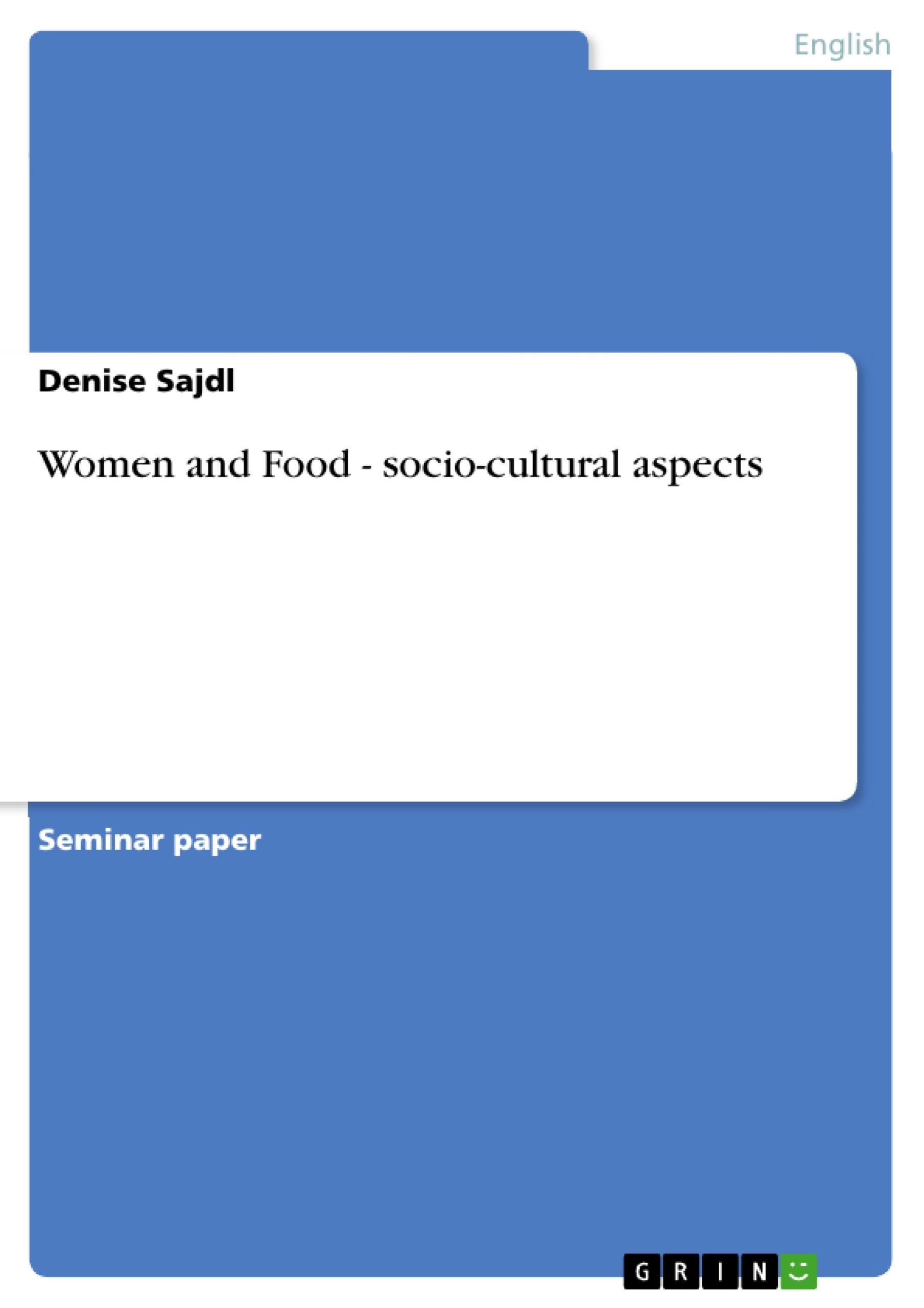Food is life. It touches everything, reveals our identities and marks social differerences. Our three basic needs as human beings are love, security and food. The act of eating is something which is present all over the world, at any time. It is an endlessly evolving enactment of family, community relationships and - which is most important for this paper - of gender. In this paper I want to discuss the powerful and fascinating relation between food and gender by showing in how far women can be studied and understood through food. How do women define themselves through their foodways? What distinguishes them from men in this special context? I also want to show how women across cultures often speak through food and appetite and try to examine some of the meanings of eating, dieting and being thin in women´s lives. These meanings extremely differ between men and women and therefore are closely linked to cultural images of masculinity and femininity. But in contrast to men, women have a special relationship to food: whereas men can mainly be characterized as food consumers, women have a dual function: they are foodconsumersas well as foodpreparers.Thus, the paper at hand not only wants to examine the aspect of women as food consumers but also their traditional role as primary food preparers. What powers do women gain and lose through their dominance and control over food preparation and distribution? Another important aspect when dealing with women and food would be the relationship to their bodies. How does the objectification of the female body subordinate women, and how can women challenge it? Thus, in chapter 3 I will examine the connections of food, female body image and culture. As Carole Counihan and Penny van Esterik both say in their introduction, food is both a scholarly concern and a real-life concern. Food studies has an interdisciplinary nature.
This is why so many scholarly disciplines such as cultural studies, anthropology, sociology, history, philosophy and literary criticism developed an interest in food studies over time. But food has ever since fascinated the general public, too. In this paper, I will try to examine anthropological, cultural, sociological and even some historical aspects to discuss the relationship between women and food. Because food-sharing can be seen as an important medium for social relations, according to Counihan and van Esterik food refusal and fasting have powerful social and symbolic weight.
Table of Contents
- Introduction
- Women and Food
- Female food habits - women as food consumers
- The control of food – women as food preparers in past and present
- Food, Culture and the Female Body
- Female body image
- The thin-ideal: women, food and dieting
- Popular portrayal of the female body
- Internalizing or resisting the ultra-thin ideal?
- Eating disorders
- Conclusion
Objectives and Key Themes
This paper aims to explore the complex relationship between women and food, examining how women define themselves through their foodways and how their experiences with food are shaped by cultural expectations and social roles. It will delve into the historical and contemporary aspects of women's roles as both food consumers and food preparers, and how these roles impact their lives. The paper will also analyze the connection between food, female body image, and cultural ideals of femininity.
- The roles of women as food consumers and food preparers
- The cultural and social construction of food and eating habits
- The influence of societal expectations on women's relationship with food and their bodies
- The objectification of the female body and its impact on women's self-perception
- The prevalence of eating disorders among women in Western cultures
Chapter Summaries
The introduction explores the significance of food in human life and its role in shaping identities and social differences. It highlights the importance of understanding women's relationship with food as a lens for examining gender dynamics. Chapter 2 delves into the complexities of women's roles as food consumers and preparers, examining how their food habits have evolved historically and how their control over food preparation affects their social standing.
Chapter 3 shifts focus to the relationship between food, the female body, and culture. It examines how societal expectations and cultural norms have influenced women's body image and their relationship with food, including the phenomenon of dieting and the prevalence of eating disorders.
Keywords
This paper explores the key concepts of food and gender, analyzing women's roles as food consumers and preparers, the cultural construction of female body image, and the influence of societal expectations on women's relationship with food. It examines the intersection of food, culture, and gender, focusing on the themes of control, power, objectification, and the prevalence of eating disorders.
- Quote paper
- Denise Sajdl (Author), 2006, Women and Food - socio-cultural aspects, Munich, GRIN Verlag, https://www.grin.com/document/62357



